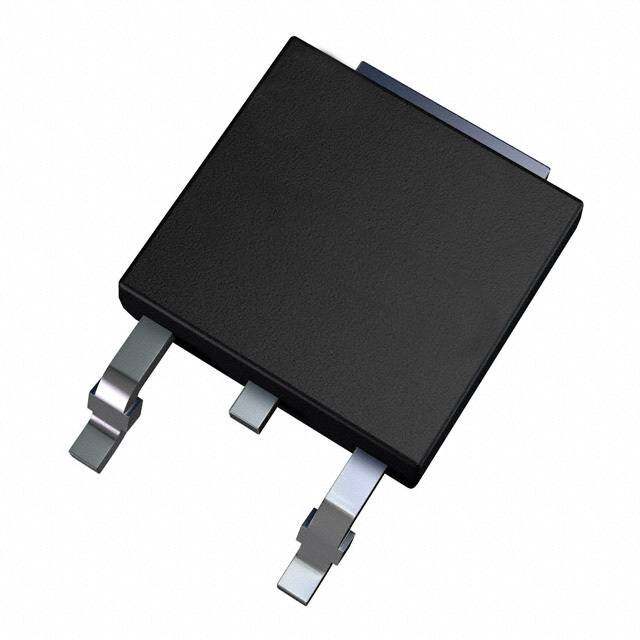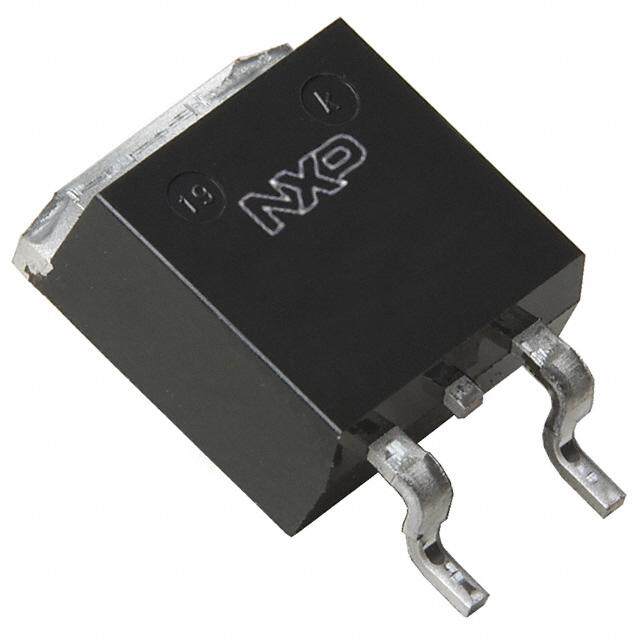ICGOO在线商城 > 分立半导体产品 > 晶体管 - FET,MOSFET - 单 > IRF1405ZLPBF
- 型号: IRF1405ZLPBF
- 制造商: International Rectifier
- 库位|库存: xxxx|xxxx
- 要求:
| 数量阶梯 | 香港交货 | 国内含税 |
| +xxxx | $xxxx | ¥xxxx |
查看当月历史价格
查看今年历史价格
IRF1405ZLPBF产品简介:
ICGOO电子元器件商城为您提供IRF1405ZLPBF由International Rectifier设计生产,在icgoo商城现货销售,并且可以通过原厂、代理商等渠道进行代购。 IRF1405ZLPBF价格参考。International RectifierIRF1405ZLPBF封装/规格:晶体管 - FET,MOSFET - 单, 通孔 N 沟道 55V 75A(Tc) 230W(Tc) TO-262。您可以下载IRF1405ZLPBF参考资料、Datasheet数据手册功能说明书,资料中有IRF1405ZLPBF 详细功能的应用电路图电压和使用方法及教程。
| 参数 | 数值 |
| 产品目录 | |
| 描述 | MOSFET N-CH 55V 75A TO-262MOSFET MOSFT 55V 150A 4.9mOhm 120nC |
| 产品分类 | FET - 单分离式半导体 |
| FET功能 | 标准 |
| FET类型 | MOSFET N 通道,金属氧化物 |
| Id-ContinuousDrainCurrent | 150 A |
| Id-连续漏极电流 | 150 A |
| 品牌 | International Rectifier |
| 产品手册 | |
| 产品图片 |
|
| rohs | 符合RoHS无铅 / 符合限制有害物质指令(RoHS)规范要求 |
| 产品系列 | 晶体管,MOSFET,International Rectifier IRF1405ZLPBFHEXFET® |
| 数据手册 | |
| 产品型号 | IRF1405ZLPBF |
| PCN组件/产地 | |
| PCN过时产品 | |
| Pd-PowerDissipation | 230 W |
| Pd-功率耗散 | 230 W |
| Qg-GateCharge | 120 nC |
| Qg-栅极电荷 | 120 nC |
| RdsOn-Drain-SourceResistance | 4.9 mOhms |
| RdsOn-漏源导通电阻 | 4.9 mOhms |
| Vds-Drain-SourceBreakdownVoltage | 55 V |
| Vds-漏源极击穿电压 | 55 V |
| Vgs-Gate-SourceBreakdownVoltage | 20 V |
| Vgs-栅源极击穿电压 | 20 V |
| 不同Id时的Vgs(th)(最大值) | 4V @ 250µA |
| 不同Vds时的输入电容(Ciss) | 4780pF @ 25V |
| 不同Vgs时的栅极电荷(Qg) | 180nC @ 10V |
| 不同 Id、Vgs时的 RdsOn(最大值) | 4.9 毫欧 @ 75A,10V |
| 产品培训模块 | http://www.digikey.cn/PTM/IndividualPTM.page?site=cn&lang=zhs&ptm=26250 |
| 产品目录页面 | |
| 产品种类 | MOSFET |
| 供应商器件封装 | TO-262 |
| 其它名称 | *IRF1405ZLPBF |
| 功率-最大值 | 230W |
| 功率耗散 | 230 W |
| 包装 | 管件 |
| 商标 | International Rectifier |
| 安装类型 | 通孔 |
| 安装风格 | Through Hole |
| 导通电阻 | 4.9 mOhms |
| 封装 | Tube |
| 封装/外壳 | TO-262-3,长引线,I²Pak,TO-262AA |
| 封装/箱体 | I2PAK-3 |
| 工厂包装数量 | 50 |
| 晶体管极性 | N-Channel |
| 栅极电荷Qg | 120 nC |
| 标准包装 | 50 |
| 汲极/源极击穿电压 | 55 V |
| 漏极连续电流 | 150 A |
| 漏源极电压(Vdss) | 55V |
| 电流-连续漏极(Id)(25°C时) | 75A (Tc) |
| 闸/源击穿电压 | 20 V |
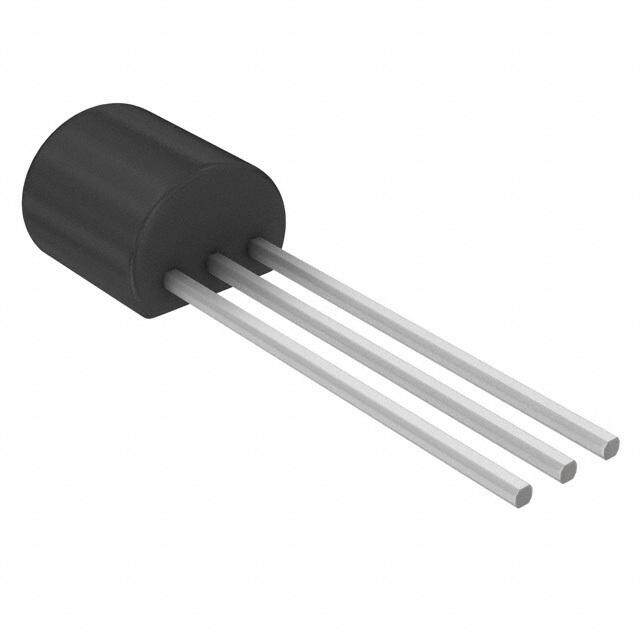
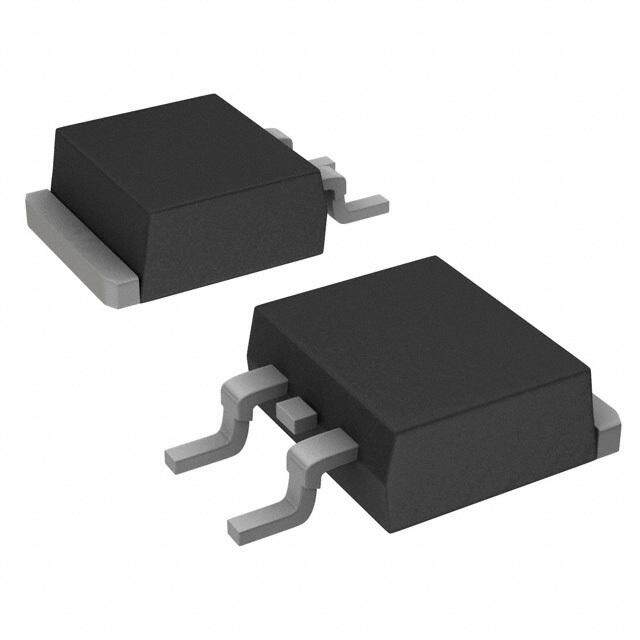
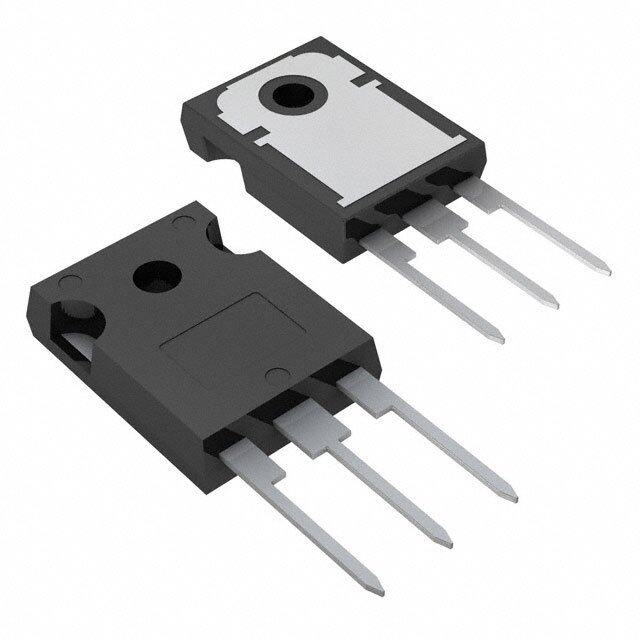
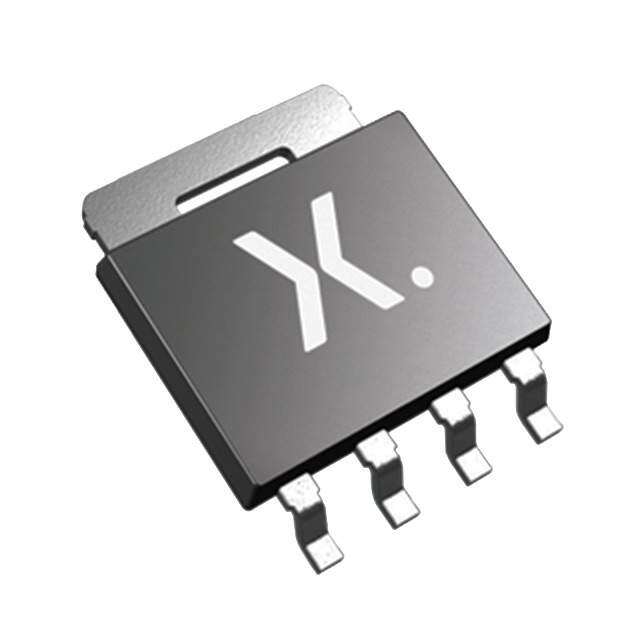
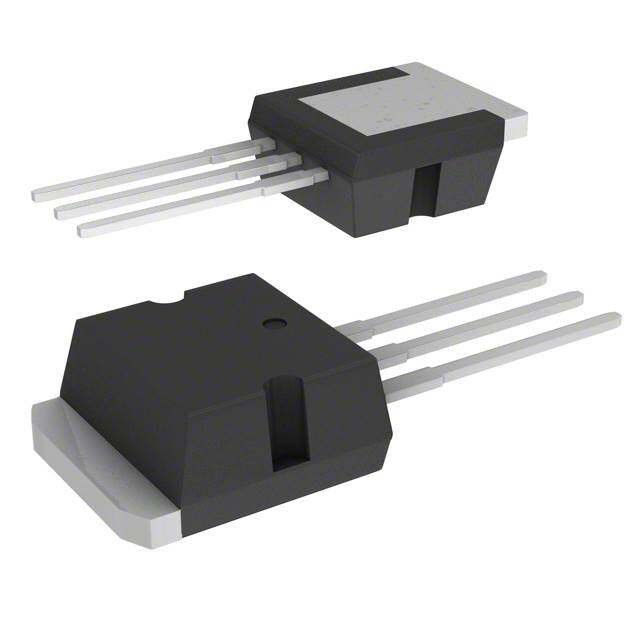
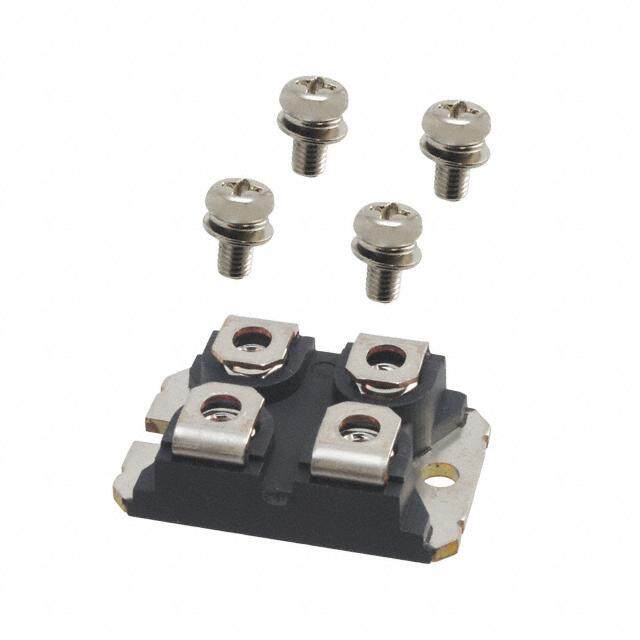

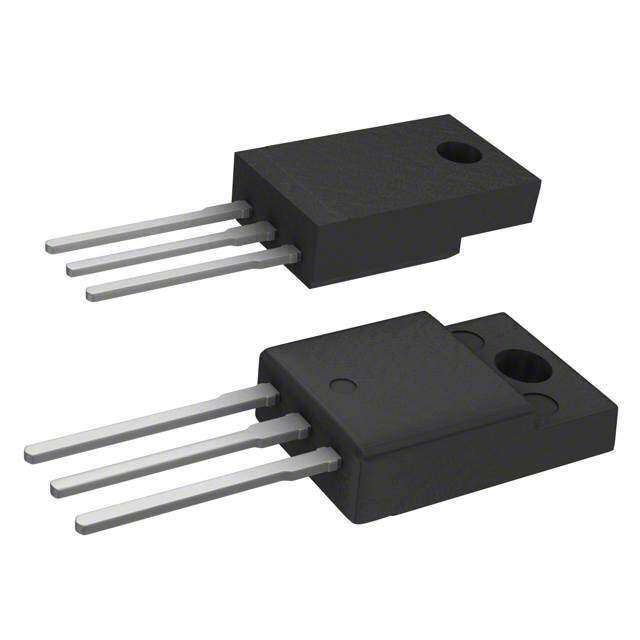
PDF Datasheet 数据手册内容提取
PD - 97018A IRF1405ZPbF IRF1405ZSPbF IRF1405ZLPbF Features HEXFET® Power MOSFET (cid:1) Advanced Process Technology (cid:1) Ultra Low On-Resistance D (cid:1) 175°C Operating Temperature V = 55V DSS (cid:1) Fast Switching (cid:1) Repetitive Avalanche Allowed up to Tjmax R = 4.9mΩ (cid:1) Lead-Free DS(on) G I = 75A D Description S This HEXFET® Power MOSFET utilizes the latest processing techniques to achieve extremely low on-resistance per silicon area. Additional features of this design are a 175°C junction operating temperature, fast switching speed and improved repetitive avalanche rating. These features combine to make this design an extremely efficient and reliable device for use in a wide variety of applications. TO-220AB D2Pak TO-262 IRF1405ZPbF IRF1405ZSPbF IRF1405ZLPbF Absolute Maximum Ratings Parameter Max. Units ID @ TC = 25°C Continuous Drain Current, VGS @ 10V (Silicon Limited) 150 ID @ TC = 100°C Continuous Drain Current, VGS @ 10V 110 A ID @ TC = 25°C Continuous Drain Current, VGS @ 10V (Package Limited) 75 IDM Pulsed Drain Current (cid:0) 600 PD @TC = 25°C Power Dissipation 230 W Linear Derating Factor 1.5 W/°C VGS Gate-to-Source Voltage ± 20 V EAS (Thermally limited) Single Pulse Avalanche Energy(cid:1) 270 mJ EAS (Tested ) Single Pulse Avalanche Energy Tested Value (cid:2) 420 IAR Avalanche Current(cid:3)(cid:0) See Fig.12a, 12b, 15, 16 A EAR Repetitive Avalanche Energy (cid:4) mJ TJ Operating Junction and -55 to + 175 TSTG Storage Temperature Range °C Soldering Temperature, for 10 seconds 300 (1.6mm from case ) Mounting Torque, 6-32 or M3 screw 10 lbf(cid:6)in (1.1N(cid:6)m) Thermal Resistance Parameter Typ. Max. Units RθJC Junction-to-Case ––– 0.65 RθCS Case-to-Sink, Flat, Greased Surface 0.50 ––– °C/W RθJA Junction-to-Ambient ––– 62 RθJA Junction-to-Ambient (PCB Mount, steady state)(cid:5) ––– 40 HEXFET® is a registered trademark of International Rectifier. www.irf.com 1 (cid:1)(cid:2)(cid:3)(cid:4)(cid:5)(cid:3)(cid:4)(cid:1)
(cid:1)(cid:2)(cid:3)(cid:4)(cid:5)(cid:6)(cid:7)(cid:8)(cid:9)(cid:10)(cid:9)(cid:11)(cid:12)(cid:13)(cid:3) Electrical Characteristics @ T = 25°C (unless otherwise specified) J Parameter Min. Typ. Max. Units Conditions V(BR)DSS Drain-to-Source Breakdown Voltage 55 ––– ––– V VGS = 0V, ID = 250µA ∆V(BR)DSS/∆TJ Breakdown Voltage Temp. Coefficient ––– 0.049 ––– V/°C Reference to 25°C, ID = 1mA RDS(on) Static Drain-to-Source On-Resistance ––– 3.7 4.9 mΩ VGS = 10V, ID = 75A (cid:3) VGS(th) Gate Threshold Voltage 2.0 ––– 4.0 V VDS = VGS, ID = 250µA gfs Forward Transconductance 88 ––– ––– S V = 25V, I = 75A DS D IDSS Drain-to-Source Leakage Current ––– ––– 20 µA VDS = 55V, VGS = 0V ––– ––– 250 V = 55V, V = 0V, T = 125°C DS GS J IGSS Gate-to-Source Forward Leakage ––– ––– 200 nA VGS = 20V Gate-to-Source Reverse Leakage ––– ––– -200 V = -20V GS Qg Total Gate Charge ––– 120 180 ID = 75A Qgs Gate-to-Source Charge ––– 31 ––– nC VDS = 44V Qgd Gate-to-Drain ("Miller") Charge ––– 46 ––– VGS = 10V (cid:3) td(on) Turn-On Delay Time ––– 18 ––– VDD = 25V tr Rise Time ––– 110 ––– ID = 75A td(off) Turn-Off Delay Time ––– 48 ––– ns RG = 4.4Ω tf Fall Time ––– 82 ––– VGS = 10V (cid:3) LD Internal Drain Inductance ––– 4.5 ––– Between lead, D nH 6mm (0.25in.) LS Internal Source Inductance ––– 7.5 ––– from package G and center of die contact S Ciss Input Capacitance ––– 4780 ––– VGS = 0V Coss Output Capacitance ––– 770 ––– VDS = 25V Crss Reverse Transfer Capacitance ––– 410 ––– pF ƒ = 1.0MHz Coss Output Capacitance ––– 2730 ––– VGS = 0V, VDS = 1.0V, ƒ = 1.0MHz Coss Output Capacitance ––– 600 ––– VGS = 0V, VDS = 44V, ƒ = 1.0MHz Coss eff. Effective Output Capacitance ––– 910 ––– VGS = 0V, VDS = 0V to 44V (cid:2) Source-Drain Ratings and Characteristics Parameter Min. Typ. Max. Units Conditions IS Continuous Source Current ––– ––– 75 MOSFET symbol D (Body Diode) A showing the ISM Pulsed Source Current ––– ––– 600 integral reverse G (Body Diode)(cid:0)(cid:1) p-n junction diode. S VSD Diode Forward Voltage ––– ––– 1.3 V TJ = 25°C, IS = 75A, VGS = 0V (cid:3) trr Reverse Recovery Time ––– 30 46 ns TJ = 25°C, IF = 75A, VDD = 25V Qrr Reverse Recovery Charge ––– 30 45 nC di/dt = 100A/µs (cid:3) ton Forward Turn-On Time Intrinsic turn-on time is negligible (turn-on is dominated by LS+LD) (cid:1)(cid:2)(cid:3)(cid:4)(cid:5)(cid:6) (cid:1)(cid:6)Repetitive rating; pulse width limited by (cid:5) Limited by T , see Fig.12a, 12b, 15, 16 for typical Jmax max. junction temperature. (See fig. 11). repetitive avalanche performance. (cid:2) (cid:6)Limited by TJmax, starting TJ = 25°C, L = 0.10mH (cid:6) This value determined from sample failure population. RG = 25Ω, IAS = 75A, VGS =10V. Part not 100%tested to this value in production. recommended for use above this value. (cid:7) This is applied to D2Pak, when mounted on 1" square PCB (cid:3) Pulse width ≤ 1.0ms; duty cycle ≤ 2%. ( FR-4 or G-10 Material ). For recommended footprint and (cid:4)Coss eff. is a fixed capacitance that gives the same soldering techniques refer to application note #AN-994. charging time as Coss while VDS is rising from 0 to 80% VDSS . 2 www.irf.com
(cid:1)(cid:2)(cid:3)(cid:4)(cid:5)(cid:6)(cid:7)(cid:8)(cid:9)(cid:10)(cid:9)(cid:11)(cid:12)(cid:13)(cid:3) 1000 1000 VGS VGS TOP 15V TOP 15V 10V 10V Aen() t 8765....0005VVVV Aen() t 8765....0005VVVV Curr 100 BOTTOM 54..05VV Curr 100 BOTTOM 54..05VV e e ucr ucr 4.5V o o S S o- o- n-t 10 4.5V n-t 10 ai ai Dr Dr ,D ,D I I 20µs PULSE WIDTH 20µs PULSE WIDTH Tj = 25°C Tj = 175°C 1 1 0.1 1 10 100 0.1 1 10 100 VDS, Drain-to-Source Voltage (V) VDS, Drain-to-Source Voltage (V) Fig 1. Typical Output Characteristics Fig 2. Typical Output Characteristics 1000 200 Α) TJ = 150°C S) 175 (n t ec( 150 Cueuecrrr 100 anonducct 125 TJ = 25°C o s 100 S n no--t 10 TJ = 25°C Tdar 75 TJ = 175°C Dari war ,D For 50 I VDS = 25V , s 20µs PULSE WIDTH Gf 25 1 0 4 6 8 10 12 0 25 50 75 100 125 150 175 200 VGS, Gate-to-Source Voltage (V) ID,Drain-to-Source Current (A) Fig 3. Typical Transfer Characteristics Fig 4. Typical Forward Transconductance vs. Drain Current www.irf.com 3
(cid:1)(cid:2)(cid:3)(cid:4)(cid:5)(cid:6)(cid:7)(cid:8)(cid:9)(cid:10)(cid:9)(cid:11)(cid:12)(cid:13)(cid:3) 100000 12.0 VGS = 0V, f = 1 MHZ I = 75A C = C + C , C SHORTED D iss gs gd ds Crss = Cgd V) 10.0 VDS= 44V Coss = Cds + Cgd e( VDS= 28V g Fepc()10000 C Voaet l 8.0 n iss c aacti Sour 6.0 p o- CCa, 1000 Coss Gae-tt 4.0 C , S rss G V 2.0 100 0.0 1 10 100 0 20 40 60 80 100 120 VDS, Drain-to-Source Voltage (V) QG Total Gate Charge (nC) Fig 5. Typical Capacitance vs. Fig 6. Typical Gate Charge vs. Drain-to-Source Voltage Gate-to-Source Voltage 1000.00 10000 OPERATION IN THIS AREA LIMITED BY R (on) A) A) DS n(t 100.00 TJ = 175°C n( t1000 e e urr urr C C n e Dari 10.00 oucr100 eevsr Sno--t 100µsec Re ,DS 1.00 TJ = 25°C Dar, iD 10 Tc = 25°C I I Tj = 175°C 1msec VGS = 0V Single Pulse 10msec 0.10 1 0.0 0.5 1.0 1.5 2.0 2.5 1 10 100 1000 VSD, Source-to-Drain Voltage (V) VDS, Drain-to-Source Voltage (V) Fig 7. Typical Source-Drain Diode Fig 8. Maximum Safe Operating Area Forward Voltage 4 www.irf.com
(cid:1)(cid:2)(cid:3)(cid:4)(cid:5)(cid:6)(cid:7)(cid:8)(cid:9)(cid:10)(cid:9)(cid:11)(cid:12)(cid:13)(cid:3) 150 2.5 ec ID = 75A n 125 Limited By Package ast VGS = 10V si e 2.0 R DCAuanen(rrr) tiI,D 102570505 ODSnanoouecr--r , t iRDSon() mNoaedz)(r i l 11..05 0 0.5 25 50 75 100 125 150 175 -60 -40 -20 0 20 40 60 80 100120140160180 TC , Case Temperature (°C) TJ , Junction Temperature (°C) Fig 9. Maximum Drain Current vs. Fig 10. Normalized On-Resistance Case Temperature vs. Temperature 1 D = 0.50 )C J h 0.20 t 0.1 Z e( 0.10 s n 0.05 o p es 0.02 R a l 0.01 0.01 m er SINGLE PULSE Th ( THERMAL RESPONSE ) Notes: 1. Duty Factor D = t1/t2 2. Peak Tj = P dm x Zthjc + Tc 0.001 1E-006 1E-005 0.0001 0.001 0.01 0.1 1 10 t1 , Rectangular Pulse Duration (sec) Fig 11. Maximum Effective Transient Thermal Impedance, Junction-to-Case www.irf.com 5
(cid:1)(cid:2)(cid:3)(cid:4)(cid:5)(cid:6)(cid:7)(cid:8)(cid:9)(cid:10)(cid:9)(cid:11)(cid:12)(cid:13)(cid:3) 15V 500 mJ) ID y( TOP 31A VDS L DRIVER egr 400 53A En BOTTOM75A e RG IADS.U.T +- VDDA aanhcl 300 2V0GVS tp 0.01Ω Aev s 200 ul P e Fig 12a. Unclamped Inductive Test Circuit gl n Si 100 V(BR)DSS ,S tp EA 0 25 50 75 100 125 150 175 Starting TJ , Junction Temperature (°C) IAS Fig 12c. Maximum Avalanche Energy Fig 12b. Unclamped Inductive Waveforms vs. Drain Current Q G (cid:1)(cid:2)(cid:3)(cid:4) Q Q GS GD 4.0 V G V) e( 3.5 g a Charge Votl 3.0 d ol I = 250µA Fig 13a. Basic Gate Charge Waveform h D es 2.5 hr CurrentRegulator e t SameTypeasD.U.T. Gat 2.0 h) 50KΩ S(t 12V .2µF G 1.5 .3µF V + D.U.T. -VDS 1.0 -75 -50 -25 0 25 50 75 100 125 150 175 200 VGS TJ , Temperature ( °C ) 3mA IG ID CurrentSamplingResistors Fig 14. Threshold Voltage vs. Temperature Fig 13b. Gate Charge Test Circuit 6 www.irf.com
(cid:1)(cid:2)(cid:3)(cid:4)(cid:5)(cid:6)(cid:7)(cid:8)(cid:9)(cid:10)(cid:9)(cid:11)(cid:12)(cid:13)(cid:3) 10000 Duty Cycle = Single Pulse 1000 Allowed avalanche Current vs A) en(t aavsasulamncinhge ∆pTuj l=se 2w5id°Cth , dueta vto urr avalanche losses C 100 0.01 e h c n a al 0.05 v A 10 0.10 1 1.0E-08 1.0E-07 1.0E-06 1.0E-05 1.0E-04 1.0E-03 1.0E-02 1.0E-01 tav (sec) Fig 15. Typical Avalanche Current vs.Pulsewidth 300 Notes on Repetitive Avalanche Curves , Figures 15, 16: TOP Single Pulse (For further info, see AN-1005 at www.irf.com) BOTTOM 10% Duty Cycle 1. Avalanche failures assumption: J) 250 ID = 75A Purely a thermal phenomenon and failure occurs at a m temperature far in excess of T . This is validated for y( every part type. jmax g 200 ner 2. Safe operation in Avalanche is allowed as long asTjmax is E not exceeded. e 3. Equation below based on circuit and waveforms shown in h 150 nc Figures 12a, 12b. aal 4. PD (ave) = Average power dissipation per single Av 100 avalanche pulse. , R 5. BV = Rated breakdown voltage (1.3 factor accounts for A voltage increase during avalanche). E 50 6. Iav = Allowable avalanche current. 7. ∆T = Allowable rise in junction temperature, not to exceed T (assumed as 25°C in Figure 15, 16). jmax 0 t Average time in avalanche. av = 25 50 75 100 125 150 175 D = Duty cycle in avalanche = t ·f av Starting TJ , Junction Temperature (°C) ZthJC(D, tav) = Transient thermal resistance, see figure 11) P = 1/2 ( 1.3·BV·I ) =(cid:7)(cid:1)T/ Z D (ave) av thJC I =2(cid:1)T/ [1.3·BV·Z ] av th E = P ·t Fig 16. Maximum Avalanche Energy AS (AR) D (ave) av vs. Temperature www.irf.com 7
(cid:1)(cid:2)(cid:3)(cid:4)(cid:5)(cid:6)(cid:7)(cid:8)(cid:9)(cid:10)(cid:9)(cid:11)(cid:12)(cid:13)(cid:3) Driver Gate Drive (cid:8)(cid:9)(cid:10)(cid:9)(cid:11) P.W. Period D = + P.W. Period (cid:24) (cid:3) (cid:1)(cid:2)(cid:3)(cid:4)(cid:5)(cid:2)(cid:6)(cid:7)(cid:8)(cid:9)(cid:10)(cid:11)(cid:5)(cid:6)(cid:7)(cid:1)(cid:11)(cid:12)(cid:13)(cid:2)(cid:14)(cid:15)(cid:3)(cid:9)(cid:6)(cid:2)(cid:11)(cid:12)(cid:13) VGS=10V • (cid:7)(cid:8)(cid:11)(cid:16)(cid:7)(cid:17)(cid:6)(cid:3)(cid:9)(cid:10)(cid:7)(cid:18)(cid:12)(cid:14)(cid:5)(cid:4)(cid:6)(cid:9)(cid:12)(cid:4)(cid:15) (cid:7)(cid:7) • (cid:19)(cid:3)(cid:11)(cid:5)(cid:12)(cid:14)(cid:7)(cid:20)(cid:21)(cid:9)(cid:12)(cid:15) - (cid:7)(cid:7) • (cid:8)(cid:11)(cid:16)(cid:7)(cid:8)(cid:15)(cid:9)(cid:22)(cid:9)(cid:23)(cid:15)(cid:7)(cid:18)(cid:12)(cid:14)(cid:5)(cid:4)(cid:6)(cid:9)(cid:12)(cid:4)(cid:15) (cid:7)(cid:7)(cid:7)(cid:7)(cid:7)(cid:7)(cid:1)(cid:5)(cid:3)(cid:3)(cid:15)(cid:12)(cid:6)(cid:7)(cid:24)(cid:3)(cid:9)(cid:12)(cid:13)(cid:25)(cid:11)(cid:3)(cid:26)(cid:15)(cid:3) D.U.T. ISDWaveform + (cid:2) Reverse (cid:4) Recovery Body Diode Forward - - + Current Currentdi/dt D.U.T. VDSWaveform Diode Recovery (cid:1) dv/dt VDD (cid:7) (cid:22)(cid:19) • (cid:14)(cid:28)(cid:29)(cid:14)(cid:6)(cid:7)(cid:4)(cid:11)(cid:12)(cid:6)(cid:3)(cid:11)(cid:21)(cid:21)(cid:15)(cid:14)(cid:7)(cid:30)(cid:10)(cid:7)(cid:31)(cid:1) (cid:27)(cid:27) Re-Applied • (cid:27)(cid:3)(cid:2)(cid:28)(cid:15)(cid:3)(cid:7)(cid:13)(cid:9)(cid:26)(cid:15)(cid:7)(cid:6)(cid:10) (cid:15)(cid:7)(cid:9)(cid:13)(cid:7)(cid:27)!"!(cid:24)! + Voltage Body Diode Forward Drop • (cid:18)(cid:2)(cid:3)(cid:7)(cid:4)(cid:11)(cid:12)(cid:6)(cid:3)(cid:11)(cid:21)(cid:21)(cid:15)(cid:14)(cid:7)(cid:30)(cid:10)(cid:7)(cid:27)(cid:5)(cid:6)(cid:10)(cid:7)#(cid:9)(cid:4)(cid:6)(cid:11)(cid:3)(cid:7)$(cid:27)$ - Inductor Curent • (cid:27)!"!(cid:24)!(cid:7)%(cid:7)(cid:27)(cid:15)(cid:28)(cid:2)(cid:4)(cid:15)(cid:7)"(cid:12)(cid:14)(cid:15)(cid:3)(cid:7)(cid:24)(cid:15)(cid:13)(cid:6) Ripple ≤ 5% ISD (cid:24)(cid:6)(cid:7) (cid:6)(cid:8)(cid:6)(cid:9)(cid:7)(cid:6)(cid:10)(cid:11)(cid:12)(cid:6)(cid:13)(cid:11)(cid:14)(cid:15)(cid:16)(cid:6)(cid:13)(cid:17)(cid:18)(cid:17)(cid:19)(cid:6)(cid:20)(cid:17)(cid:18)(cid:15)(cid:16)(cid:17)(cid:21) (cid:19)(cid:17) Fig 17. (cid:5)(cid:6)(cid:7)(cid:8)(cid:3)(cid:9)(cid:10)(cid:11)(cid:12)(cid:6)(cid:3)(cid:13)(cid:6)(cid:14)(cid:11)(cid:15)(cid:6)(cid:16)(cid:17)(cid:3)(cid:12)(cid:15)(cid:18)(cid:12)(cid:19)(cid:3)(cid:20)(cid:6)(cid:21)(cid:19)(cid:3)(cid:22)(cid:10)(cid:16)(cid:14)(cid:23)(cid:10)(cid:19)(cid:3)for N-Channel HEXFET(cid:1)(cid:3)Power MOSFETs (cid:22) (cid:27) (cid:7) (cid:27)(cid:17) (cid:7) (cid:19)(cid:17) (cid:20)(cid:23)(cid:24)(cid:23)(cid:25)(cid:23) (cid:22) (cid:19) +(cid:7) - (cid:27)(cid:27) (cid:4)(cid:1)(cid:7) (cid:20)(cid:5)(cid:21)(cid:13)(cid:15)(cid:7)&(cid:2)(cid:14)(cid:6)’(cid:7)≤ 1 ((cid:13) (cid:27)(cid:5)(cid:6)(cid:10)(cid:7)#(cid:9)(cid:4)(cid:6)(cid:11)(cid:3)(cid:7)≤ 0.1 % Fig 18a. Switching Time Test Circuit VDS 90% 10% VGS td(on) tr td(off) tf Fig 18b. Switching Time Waveforms 8 www.irf.com
(cid:1)(cid:2)(cid:3)(cid:4)(cid:5)(cid:6)(cid:7)(cid:8)(cid:9)(cid:10)(cid:9)(cid:11)(cid:12)(cid:13)(cid:3) (cid:1)(cid:2)(cid:3)(cid:4)(cid:4)(cid:5)(cid:6)(cid:7)(cid:8)(cid:9)(cid:10)(cid:22)(cid:14)(cid:10)(cid:17)(cid:23)(cid:8)(cid:2)(cid:24)(cid:12)(cid:25)(cid:15)(cid:16)(cid:23) (cid:1)(cid:2)(cid:3)(cid:4)(cid:5)(cid:6)(cid:2)(cid:7)(cid:5)(cid:6)(cid:8)(cid:9)(cid:10)(cid:4)(cid:8)(cid:6)(cid:11)(cid:7)(cid:12)(cid:5)(cid:8)(cid:2)(cid:5)(cid:8)(cid:3)(cid:2)(cid:13)(cid:13)(cid:2)(cid:3)(cid:4)(cid:14)(cid:4)(cid:10)(cid:6)(cid:8)(cid:15)(cid:2)(cid:5)(cid:16)(cid:11)(cid:4)(cid:6)(cid:17) (cid:1)(cid:2)(cid:3)(cid:4)(cid:4)(cid:5)(cid:6)(cid:7)(cid:8)(cid:9)(cid:10)(cid:11)(cid:12)(cid:8)(cid:13)(cid:10)(cid:11)(cid:14)(cid:15)(cid:16)(cid:17)(cid:8)(cid:18)(cid:16)(cid:19)(cid:20)(cid:11)(cid:21)(cid:10)(cid:12)(cid:15)(cid:20)(cid:16) EXAMPLE: THIS IS AN IRF1010 LOT CODE 1789 INTERNATIONAL PART NUMBER ASSEMBLED ON WW 19, 2000 RECTIFIER IN THE ASSEMBLY LINE "C" LOGO DATE CODE YEAR 0 = 2000 Note: "P" in assembly line position ASSEMBLY indicates "Lead - Free" LOT CODE WEEK 19 LINE C Notes: 1.For an Automotive Qualified version of this part please seehttp://www.irf.com/product-info/auto/ 2.For the most current drawing please refer to IR website at http://www.irf.com/package/ www.irf.com 9
(cid:1)(cid:2)(cid:3)(cid:4)(cid:5)(cid:6)(cid:7)(cid:8)(cid:9)(cid:10)(cid:9)(cid:11)(cid:12)(cid:13)(cid:3) (cid:26)(cid:1)(cid:9)(cid:10)(cid:14)(cid:8)(cid:27)(cid:1)(cid:2)(cid:3)(cid:4)(cid:28)(cid:29)(cid:6)(cid:7)(cid:30)(cid:8)(cid:9)(cid:10)(cid:22)(cid:14)(cid:10)(cid:17)(cid:23)(cid:8)(cid:2)(cid:24)(cid:12)(cid:25)(cid:15)(cid:16)(cid:23) (cid:1)(cid:2)(cid:3)(cid:4)(cid:5)(cid:6)(cid:2)(cid:7)(cid:5)(cid:6)(cid:8)(cid:9)(cid:10)(cid:4)(cid:8)(cid:6)(cid:11)(cid:7)(cid:12)(cid:5)(cid:8)(cid:2)(cid:5)(cid:8)(cid:3)(cid:2)(cid:13)(cid:13)(cid:2)(cid:3)(cid:4)(cid:14)(cid:4)(cid:10)(cid:6)(cid:8)(cid:15)(cid:2)(cid:5)(cid:16)(cid:11)(cid:4)(cid:6)(cid:17) (cid:26)(cid:1)(cid:9)(cid:10)(cid:14)(cid:8)(cid:27)(cid:1)(cid:2)(cid:3)(cid:4)(cid:28)(cid:29)(cid:6)(cid:7)(cid:30)(cid:8)(cid:9)(cid:10)(cid:11)(cid:12)(cid:8)(cid:13)(cid:10)(cid:11)(cid:14)(cid:15)(cid:16)(cid:17)(cid:8)(cid:18)(cid:16)(cid:19)(cid:20)(cid:11)(cid:21)(cid:10)(cid:12)(cid:15)(cid:20)(cid:16) THIS IS AN IRF530S WITH PART NUMBER LOT CODE 8024 INTERNATIONAL ASSEMBLED ON WW 02, 2000 RECTIFIER F530S IN THE ASSEMBLY LINE "L" LOGO DATE CODE YEAR 0 = 2000 ASSEMBLY LOT CODE WEEK 02 LINE L OR PART NUMBER INTERNATIONAL RECTIFIER F530S LOGO DATE CODE P = DESIGNATES LEAD - FREE PRODUCT (OPTIONAL) ASSEMBLY YEAR 0 = 2000 LOT CODE WEEK 02 A = ASSEMBLY SITE CODE Notes: 1.For an Automotive Qualified version of this part please see http://www.irf.com/product-info/datasheets/data/auirf1405zs.pdf 2.For the most current drawing please refer to IR website at http://www.irf.com/package/ 10 www.irf.com
(cid:1)(cid:2)(cid:3)(cid:4)(cid:5)(cid:6)(cid:7)(cid:8)(cid:9)(cid:10)(cid:9)(cid:11)(cid:12)(cid:13)(cid:3) TO-262 Package Outline Dimensions are shown in millimeters (inches) TO-262 Part Marking Information EXAMPLE: THIS IS AN IRL3103L LOT CODE 1789 PART NUMBER INTERNATIONAL ASSEMBLED ON WW 19, 1997 RECTIFIER IN THE ASSEMBLY LINE "C" LOGO DATE CODE ASSEMBLY YEAR 7 = 1997 LOT CODE WEEK 19 LINE C OR PART NUMBER INTERNATIONAL RECTIFIER LOGO DATE CODE P = DESIGNATES LEAD-FREE ASSEMBLY LOT CODE PRODUCT (OPTIONAL) YEAR 7 = 1997 WEEK 19 A = ASSEMBLY SITE CODE Notes: 1. For an Automotive Qualified version of this part please see http://www.irf.com/product-info/datasheets/data/auirf1405zs.pdf 2. For the most current drawing please refer to IR website at http://www.irf.com/package/ www.irf.com 11
(cid:1)(cid:2)(cid:3)(cid:4)(cid:5)(cid:6)(cid:7)(cid:8)(cid:9)(cid:10)(cid:9)(cid:11)(cid:12)(cid:13)(cid:3) (cid:26)(cid:1)(cid:9)(cid:10)(cid:14)(cid:8)(cid:1)(cid:10)(cid:31)(cid:23)(cid:8) (cid:8)!(cid:23)(cid:23)(cid:25)(cid:8)(cid:18)(cid:16)(cid:19)(cid:20)(cid:11)(cid:21)(cid:10)(cid:12)(cid:15)(cid:20)(cid:16) Dimensions are shown in millimeters (inches) TRR 1.60 (.063) 1.50 (.059) 1.60 (.063) 43..1900 ((..116513)) 1.50 (.059) 0.368 (.0145) 0.342 (.0135) FEED DIRECTION 1.85 (.073) 11.60 (.457) 1.65 (.065) 11.40 (.449) 24.30 (.957) 15.42 (.609) 23.90 (.941) 15.22 (.601) TRL 1.75 (.069) 10.90 (.429) 1.25 (.049) 10.70 (.421) 4.72 (.136) 16.10 (.634) 4.52 (.178) 15.90 (.626) FEED DIRECTION 13.50 (.532) 27.40 (1.079) 12.80 (.504) 23.90 (.941) 4 330.00 60.00 (2.362) (14.173) MIN. MAX. 30.40 (1.197) NOTES : MAX. 1. COMFORMS TO EIA-418. 26.40 (1.039) 4 2. CONTROLLING DIMENSION: MILLIMETER. 24.40 (.961) 3. DIMENSION MEASURED @ HUB. 3 4. INCLUDES FLANGE DISTORTION @ OUTER EDGE. TO-220AB packages are not recommended for Surface Mount Application. Data and specifications subject to change without notice. This product has been designed and qualified for the Industrial market. Qualification Standards can be found on IR’s Web site. IR WORLD HEADQUARTERS: 233 Kansas St., El Segundo, California 90245, USA Tel: (310) 252-7105 TAC Fax: (310) 252-7903 Visit us at www.irf.com for sales contact information. 07/2010 12 www.irf.com
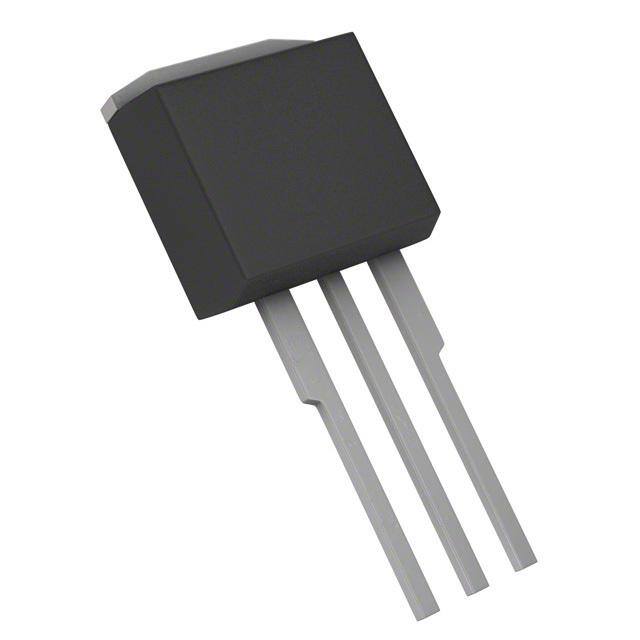
 Datasheet下载
Datasheet下载


